website link: https://zw1745.wixsite.com/website
video link: https://www.youtube.com/watch?v=HiXDyUKJLHo
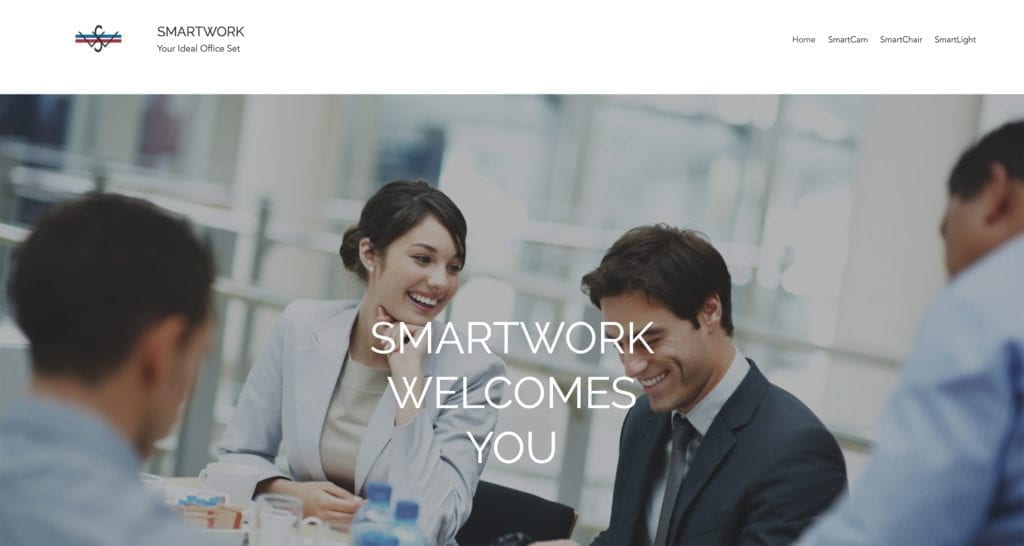
Framework: Speculative Design
Agenda: Responsible Agenda
Goal: Performance
For our group project, we are designing a speculative design that will make an impact on the future. Our goal is to improve the performance of a now-existing thing and our agenda is a responsible agenda which is to solve a problem.
We started by defining a problem we’d like to solve and a scenario that needs to be improved. Recently, there’s a piece of news on Github about programmers working length. “996” represents their weekly working routine: start working at 9 am, end working at 9 pm, work for 6 days a week. Currently, this movement of a petition for less working pressure is only performed by programmers reporting the companies that have this situation going on and they are hoping for laws or policies to improve this situation.
However, we don’t think this petition for better policies will actually make a difference in this situation. In a way, policies are made to be broken, in situations like this, it is not the managers making these programmers stay long hours after work, it’s always because the work distribution is not reasonable, and the peer pressure among workers. When some of them are finishing more works than others, the invisible competitions between workers start, and it increases peer pressure little by little. Therefore, we decide to design a SmartWork system to improve this situation by adopting our office equipment into future offices, these equipment are specially designed for keeping track of the workers’ working pressure and their amount of quality work, in this case, both the managers and the workers can receive benefits: the workers will be made sure that their working pressure isn’t above a certain value, the managers can have an eye on the working efficiency of their workers and therefore obtain higher quality works.
When designing our products for the future office, we separated our designs into two parts, one for the workers and the other for the managers. For the workers, we want to make sure that their working pressure doesn’t go beyond a certain level, but also they are obliged to produce a certain amount of quality work per day before they can leave work. Therefore, we design a detecting system that is assembled within the workers’ webcam, which is called “Smartcam”, it monitors the stress level and concentration level of the worker through capturing the movement of the workers’ facial muscles and calculating the values, it sends the concentration values back to the SmartChair as an indicator of the amount of quality work the worker has finished, the stress level is sent to the SmartLight which is designed for the manager. These two products will be discussed later.
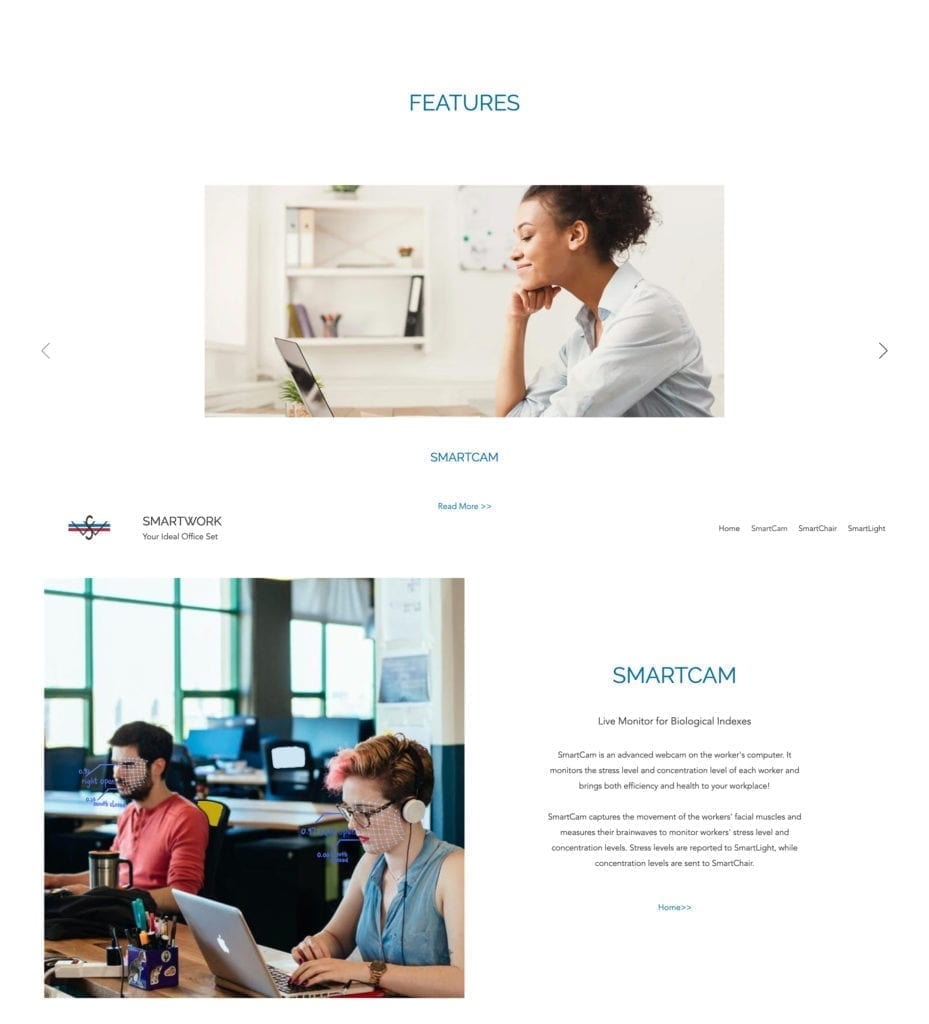
SmartChair is an improved version of nowadays’ office chairs, it comes with SmartCam and receives the data feedback from the SmartCam. According to the concentration level which represents the length of productive work time the worker has contributed, the LED on the back of SmartChair will slowly turn brighter. When the worker reaches the amount of required concentrating hours per day, the LED will blink and the worker can leave work. The LED wouldn’t turn bright if the worker isn’t working for SmartCam will detect his facial movement.
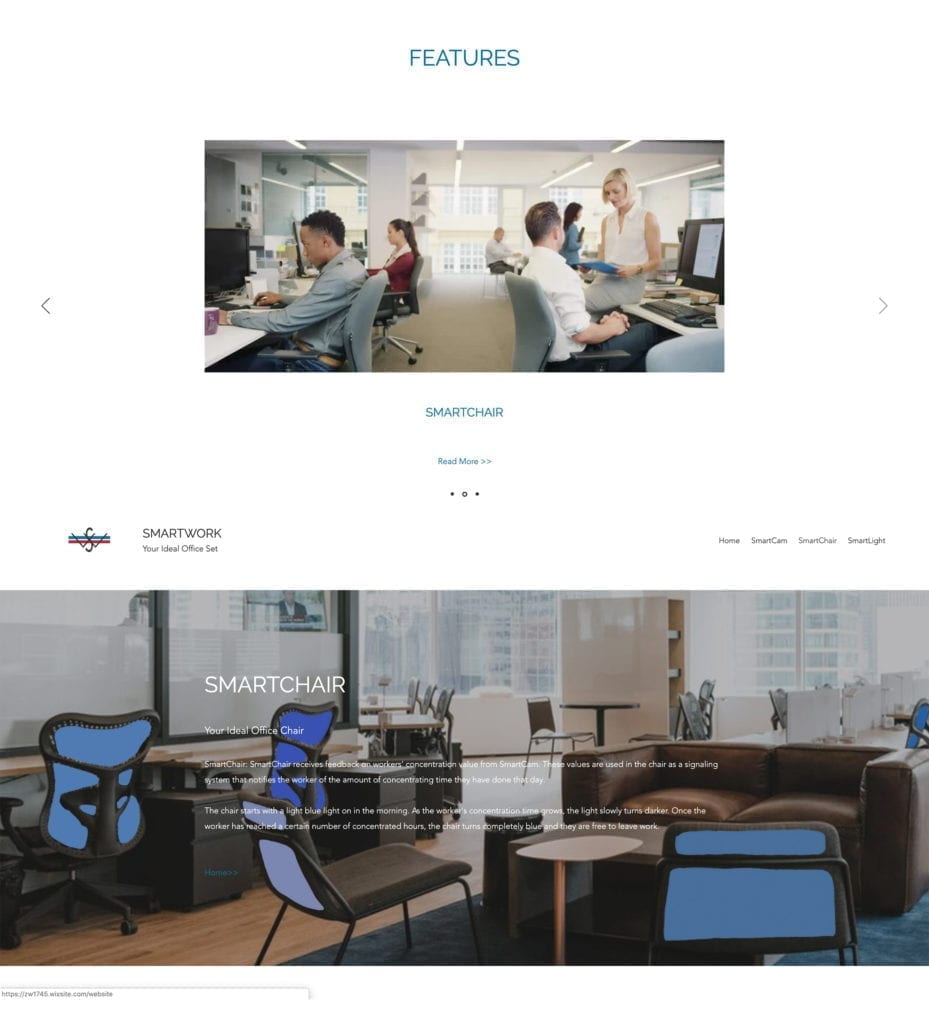
SmartLight is a monitor designed for the manager to check on the workers’ working pressure. If the average working pressure of the workers is in the warning zone, which is too high, the manager will tell the worker to take a break or the company will get fined. The levels of working pressure are indicated with four different colors: green, yellow, orange and red. The redder the light turns, the higher the average stress level of the worker is.
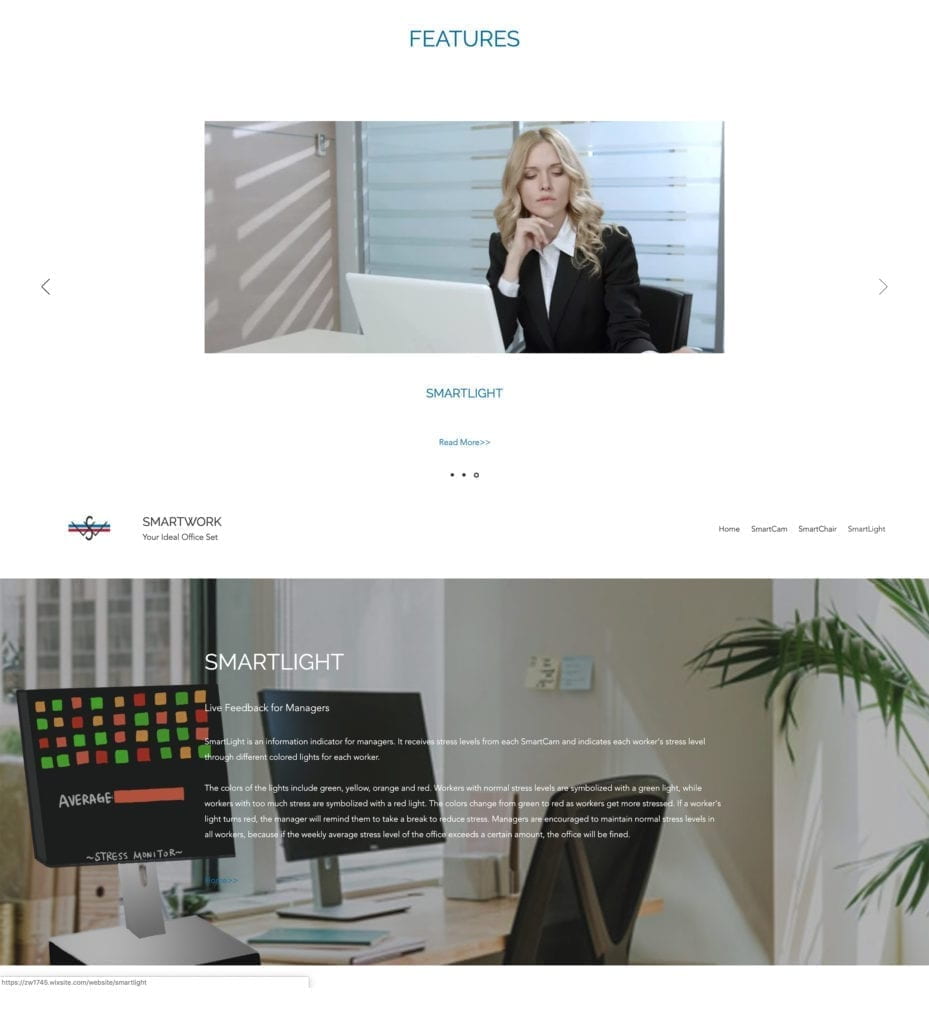
Limited by the technology of detecting facial muscle movement and concentration level, while prototyping, we can’t really program the SmartCam out. To demonstrate our idea, we decided to film a video of the demonstration of our three products. Peter programmed the LED for the SmartChair, the light is programmed to turn brighter with time and flicker when it reaches a certain intensity value. Zeyao used p5 and programmed our SmartLight screen with each color block indicating a worker and a value bar on the bottom implying the average stress level. I created a website with descriptions of our products and made a video demonstration of the products.
With Zeyao as the worker, I had Peter remain the intensity of the LED for a while to film the condition of the LED light when the worker isn’t working. Zeyao was on his phone scrolling through Instagram pages and the LED remains the same intensity as the SmartCam detects that he isn’t concentrating at that moment. Then I asked Zeyao to put down the phone and start working, with Peter changing his program to the light getting brighter and flickers by the end when Zeyao leaves work. I filmed this as an indicator for the SmartChair has the function of telling the worker he can leave work when the concentration-time reaches a certain amount of hours. For SmartLight, I asked Peter to be the manager who was working on his laptop when suddenly heard an alert from SmartLight informing him that the average stress level of his workers is very high, I focused on the red bar and filmed Peter going to Zeyao to tell him to take a break from work. When editing the clips, I did a brief voiceover to explain the functions of our products.
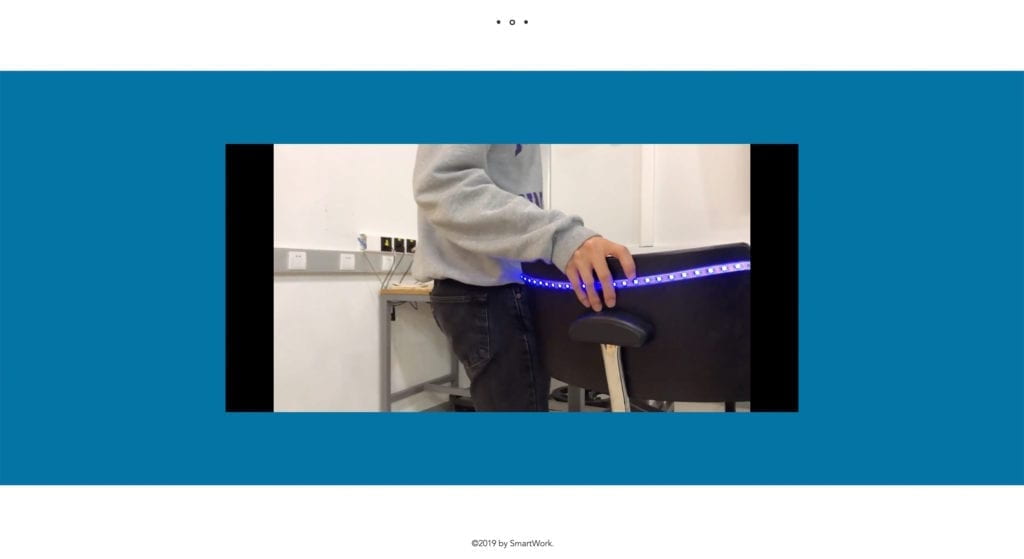
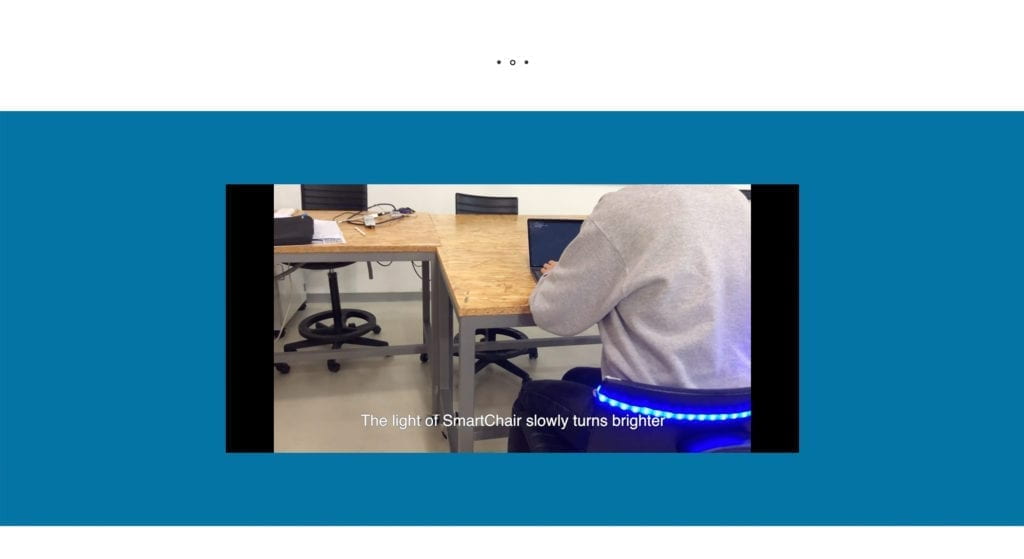
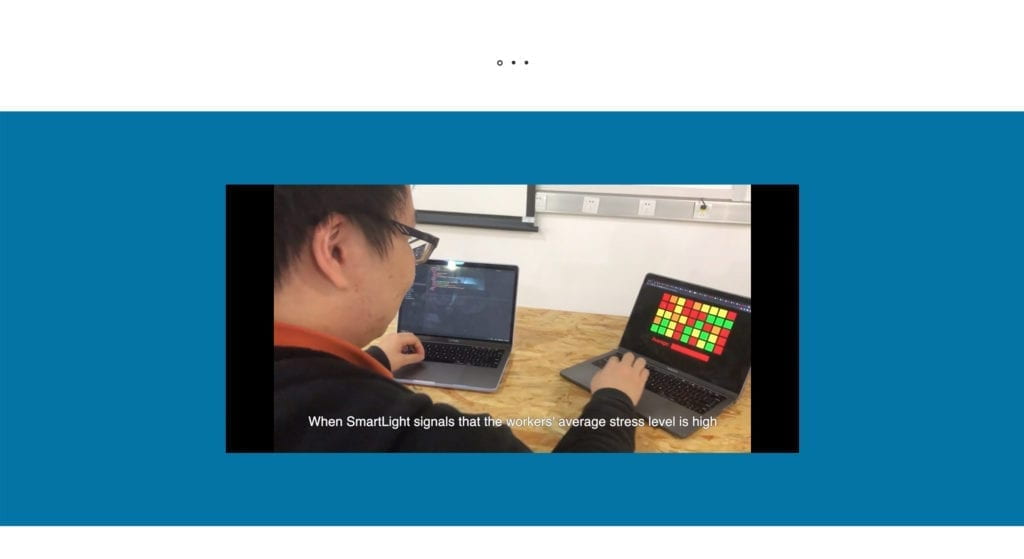
Looking back at our group project, I think we fulfilled the framework of speculative design since this is an office set designed for future offices since some technologies like stress level and concentration detecting systems are not yet invented. And we completed the aim of improving performances and the responsible agenda by solving a now-existing problem “996” and providing it with a solution of applying a better office set.
However, I think we are lacking descriptions of the target audiences. This office set is, in a way, freeing the workers from disorganized working hours but in another way, monitoring their brains. Whether the companies would like to buy this office system can become a problem. Additionally, we can’t make sure the worker is working through simply checking on concentration level, he can be concentrating on something else other than his works and can still be counted as concentrating. These are the problems we need to fix if given more time.
(Drawings: Zeyao & Jennifer; Arduino coding: Peter; p5: Zeyao; Website: Jamie & Jennifer; Video: Jamie)